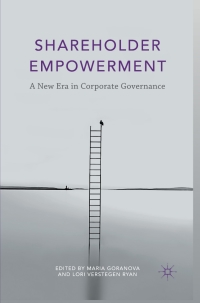Question
Please answer Questions 1-4 according to the text. Fiat Chrysler and Frances PSA, the owner of Peugeot, have struck a merger deal to create the
Please answer Questions 1-4 according to the text.
Fiat Chrysler and Frances PSA, the owner of Peugeot, have struck a merger deal to create the worlds fourth-largest carmaker at a time of sweeping change in the auto industry. The two companies said they had signed a binding combination agreement in a deal likely to attract the scrutiny of competition regulators in Brussels. Shareholders of each group would hold 50 per cent in the new entity, which will have revenues of 170bn, a combined workforce of about 400,000 and the ability to invest in new technologies set to define vehicles of the future. Its sales of 8.7m vehicles a year will put the merged entity ahead of General Motors and Hyundai-Kia. The deal will reshape the automotive sector, which is undergoing a period of transformation not seen since the advent of the first mass-produced cars in the early 20th century. ()
Based on their current market capitalisations, the new entity would have an equity value of about 41.1bn. Despite targeting annual cost savings of around 3.7bn, PSA and FCA said no plants would close as a result of the merger. However, PSA and FCA bosses refused to say where redundancies might fall. Ferdinand Dudenhffer, from the Universitt Duisburg-Essen, said PSAs Opel unit would be the loser in the merger and predicted at least 10,000 engineering job losses overall. Opels role in the new group will become weaker. [It will have to] fight alongside mass-market brands Fiat, Citron and Peugeot for the same customers, he added. With a portfolio of brands covering the luxury, premium and mainstream passenger car segments, the new groups marques will include Citron, Opel and Vauxhall from PSA, with FCA contributing Jeep, Dodge and Alfa Romeo.
While the move was broadly welcomed by analysts, some flagged risks: It is very clear that especially in Europe, the combined entity will face massive challenges, including finding cost savings and shrinking the number of brands, in order to be able electrify its portfolio and meet EU standards, said Arndt Ellinghorst of Evercore ISI. Max Warburton of Bernstein said: This is an industry where M&A has a poor record and where cultural clashes are common, causing investors to be cautious about the prospects of big deals. But we believe there will be less dancing around, less cultural impediments and fewer stupid power games than weve seen in many auto sector deals.
[Quoted from Financial Times, 18 December 2019.]
- Describe the organizational structure, which would best accommodate the combined entity. You can use terms like centralized/decentralized, organic/mechanistic, departmentalization, specialization, bureaucracy, etc.
- Specify which strategies can lead to further growth of the combined entity. You can make use of terms such as integration, competency, unification, diversification and concentration.
- According to you, will the new company management decide to decrease the number of the brands? Will groupthink play a role in the decision of the management team?
- What will be the core competence of the new company? Relate this to the roots of competitive advantage described in the article of Prahalad and Hamel.
Step by Step Solution
There are 3 Steps involved in it
Step: 1

Get Instant Access to Expert-Tailored Solutions
See step-by-step solutions with expert insights and AI powered tools for academic success
Step: 2

Step: 3

Ace Your Homework with AI
Get the answers you need in no time with our AI-driven, step-by-step assistance
Get Started


